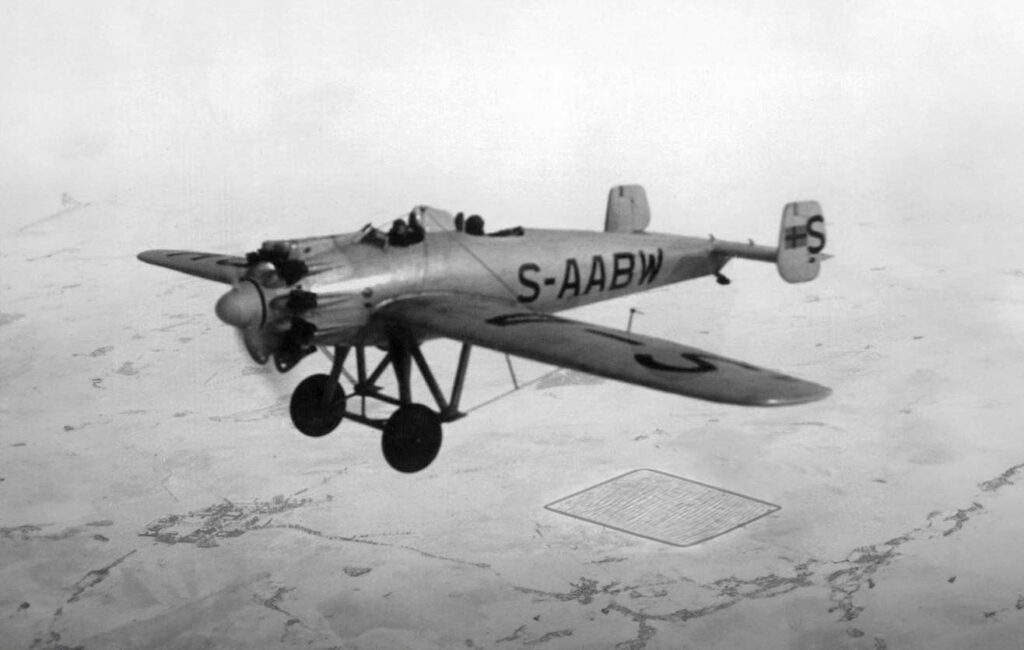The Junkers K 47, a 1920s German biplane, was a ground-attack and fighter aircraft, notable for its metal construction and BMW VI engine. This article offers an extensive analysis of the Junkers K 47, discussing its development, design features, performance specifications, and military use. It highlights the aircraft’s role in pioneering metal construction in combat aircraft during the interwar period.
The Junkers K 47 played a significant role in the evolution of military aviation, particularly in the development of ground-attack aircraft. It represented a shift in design philosophy and technical capabilities in the interwar period. This article explores the development, design, performance, and operational history of the Junkers K 47.
History of the Development of the Junkers K 47:
In the late 1920s, the burgeoning field of military aviation was marked by rapid advancements in technology and an increasing demand for versatile combat aircraft. The Junkers K 47 was developed during this transformative era, addressing the need for a robust and effective ground-attack aircraft.
The development of the K 47 was spearheaded by Junkers, a pioneering German aircraft manufacturer, under the leadership of their chief designer, Ernst Zindel. The project began with the objective of creating a durable and powerful aircraft that could excel in ground-attack and fighter roles. The K 47 made its first flight in 1928, showcasing a blend of innovative design elements and practical combat capabilities.
This era was characterized by experimentation in aircraft design, with a growing emphasis on all-metal construction and powerful engines. The K 47 was designed in response to these trends, aiming to provide a technologically advanced aircraft for potential military use.
Design of the Junkers K 47:
The Junkers K 47 was a testament to innovative aircraft design of its time. It was a two-seat biplane with a wingspan of 11.90 meters (39 feet) and a length of 9.10 meters (29 feet 10 inches). The aircraft’s design was notable for its all-metal construction, a characteristic that set Junkers designs apart.
Powered by a BMW VI 6.3 ZU engine, the K 47 was capable of generating up to 660 horsepower (492 kW). This engine choice contributed significantly to the aircraft’s combat performance, providing high power and reliability.
The K 47’s design included several advanced features, such as a cantilever wing structure, which eliminated the need for external wing bracing and wires, resulting in a cleaner aerodynamic profile. However, its biplane configuration limited its maximum speed and altitude capabilities compared to later monoplane designs.
Despite these limitations, the K 47 was a step forward in integrating all-metal construction and powerful engine technology into combat aircraft design.

Performance of the Junkers K 47:
The Junkers K 47’s performance was a highlight of its era. Equipped with the BMW VI engine, the aircraft achieved a top speed of around 230 km/h (143 mph), with a service ceiling of approximately 6,200 meters (20,341 feet) and a range of about 600 kilometers (373 miles).
Compared to contemporaries like the British Hawker Hart or the American Curtiss Falcon, the K 47 was competitive in terms of power and durability. Its all-metal construction provided an advantage in terms of robustness and longevity.
Military Use and Combat of the Junkers K 47:
The Junkers K 47 saw limited use in military operations. Its primary armament consisted of two forward-firing machine guns and one rear-mounted gun for defense, along with the capability to carry a modest payload of bombs.
While the K 47 did not see extensive combat service, it played a role in the development of ground-attack tactics and strategies. The aircraft was evaluated by several countries for potential military applications, but it did not achieve widespread adoption.
The K 47 was eventually overshadowed by more advanced aircraft designs and was phased out of service. Its influence, however, was seen in subsequent aircraft designs that adopted its all-metal construction and robust engineering.
The Junkers K 47 represented a significant step in the evolution of military aircraft design during the interwar period. Its innovative all-metal construction and powerful engine set new standards in combat aircraft capabilities. While the K 47 did not see widespread use in military conflicts, its design principles and technological advancements contributed to the development of future combat aircraft, marking it as an important aircraft in the history of military aviation.
Back to the Warbirds section.